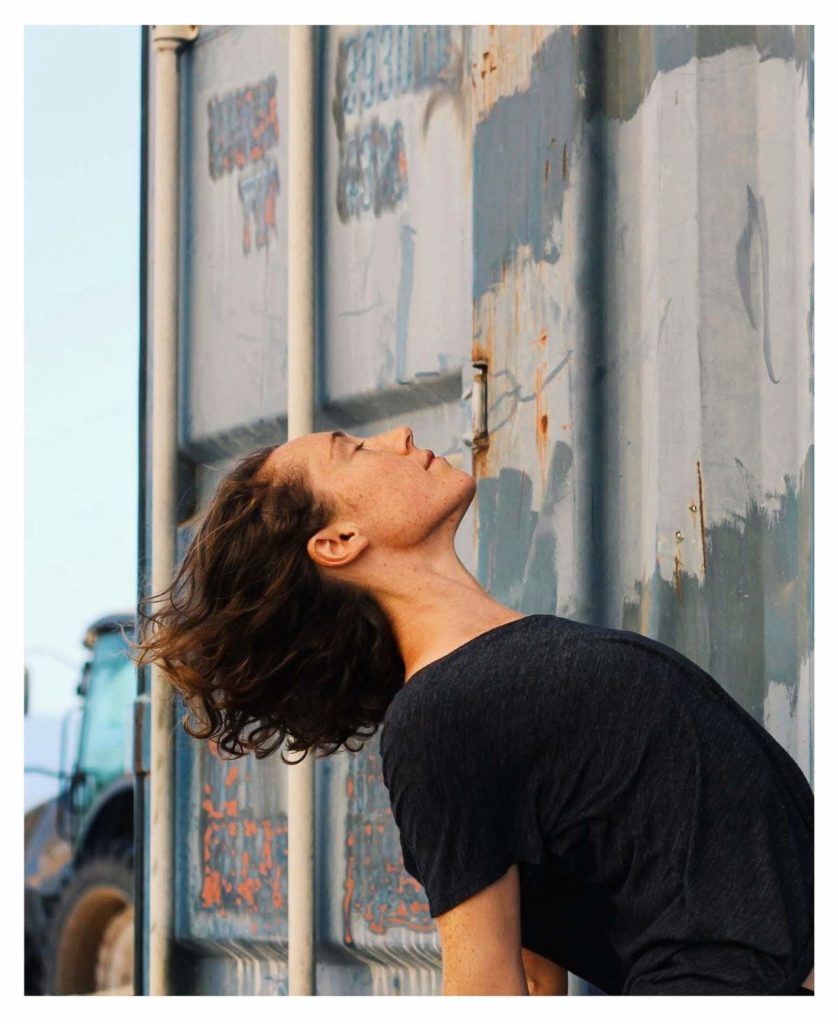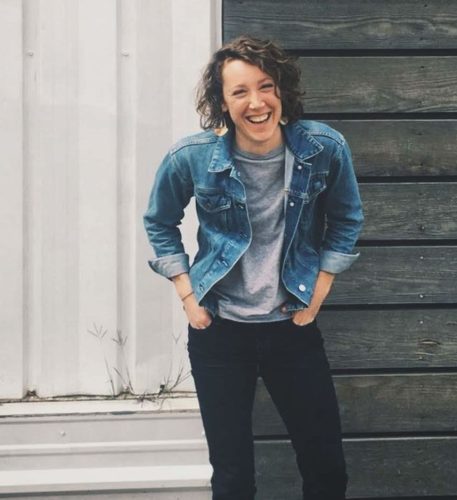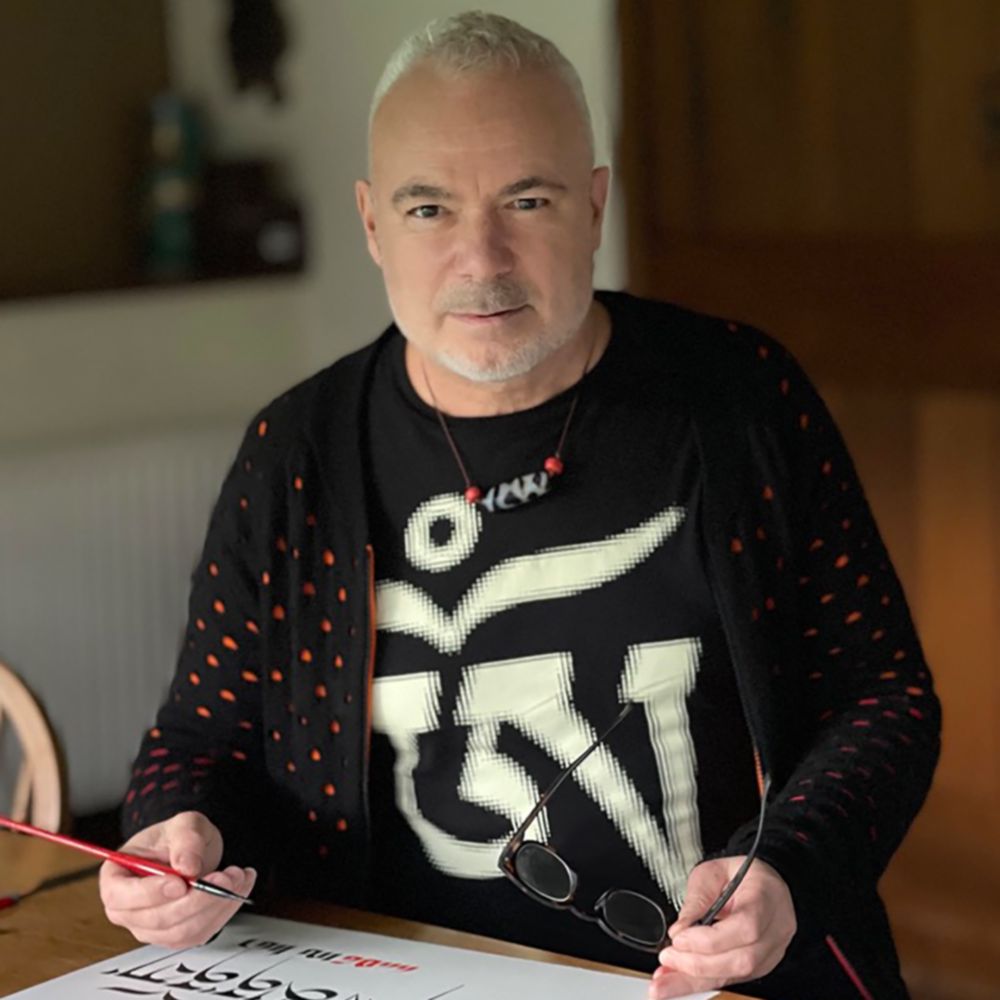We all have different reasons for practicing yoga, different paths that led us to find the practice. Many start for physical (even superficial) benefits, only to realize the profound, spiritual insights that are also accessible through asana and meditation. Meanwhile, others have to hit their knees before they become open to these rewards. As Rumi described, “The wound is the place where the light enters you.” In this column, teachers and students alike will contribute deeply-personal accounts of their own yoga journeys, how they found the practice, and why they stay committed to it. Thank you for holding the space and allowing them to share their truths.
It was the middle of the afternoon. I’d driven three hours across Texas to get home because things were really starting to get weird. I placed the candle in the middle of the coffee table on a stack of Southern Living magazines. After turning the TV down, I motioned her to come sit.
This candle had been collecting dust on the mantle for many months before, and I’d wiped the wax free of accumulation with my finger before lighting it with a long wand lighter. It reeked of sugar cookies or something terrible from the Yankee Candle Company, but it was the only candle I could find.
I’d asked her to fix her attention to the flame. This was one of the things that had popped up when I’d Googled “simple ways to concentrate.”
Her eyes darted, and tears streamed out of mine. She wrung her hands in a fit of nervousness and anxiety, as her eyes continued to dash around the room. As if her brain was telling her to look anywhere but at that flame. “Just look at the candle, Mom,” I thought. “Just look at the freaking candle!” my brain screamed.
For the past year, she’d exhibited signs of what we thought were a mid-life crisis that had progressively gotten worse and had recently come to a head. She was apathetic, showed little affection, and oscillated between fits of anxiety and deep, deep depression: sleeping in until noon, eating very little, forgetting to do the laundry and our birthdays. We’d find notes and reminders all over the wall calendar as signs of holding onto the order and organization that was no longer there.
The little signs became a bigger and bigger reality that something was seriously wrong. She couldn’t remember how to get to the grocery store and back. (It was four blocks away.) As a veteran preschool teacher of 20 years, she couldn’t maintain order in the classroom. She’d call my dad at work for consol every hour, then every half hour, then every 15 minutes, until she forgot how to use her phone altogether. Our daily phone calls or texts had ceased. I equated this to signs of growing up. I was just out of college. I was an adult, and maybe I wasn’t “supposed to” talk to my mom everyday.
It was the thick of a humid Texas summer. She wasn’t eating enough or drinking enough water. She wasn’t going to the bathroom. She fainted (to put it loosely), which is how she ended up in the hospital for several days. This led to months and months of hormonal, psychological, and cognitive testing. The diagnosis: Frontotemporal Dementia. I didn’t understand. Why was my dad crying? The only other time I’d seen him cry was at his father’s funeral.
This was a funeral of sorts. An ultimatum that what once was will never be again. Dementia isn’t curable. It’s a life sentence. The car ride home was quiet, except for my mom babbling and groaning about how “that lady” told her she couldn’t drive anymore. She expressed that she didn’t like this word, “dementia.” Us either, mama.
I’d practiced yoga on and off for several years prior to her diagnosis, mostly the on-the-surface asana kind. After her diagnosis, however, as the disease continued to progress, it took on new light. As I’d felt life spiraling out of control, the practice had a way of corralling me back to sanity and stability. A centrifuge that helped separate the messy parts from the parts that felt easier. It wrung me out. Savasana was an opportunity for stillness and reflection. Tears streamed out of the corners of my eyes, along the highs of my cheekbones, down my ear lobes, into little puddles on my mat. Those puddles of tears were puddles of previously-held beliefs – ones that thought change didn’t have to happen unless I wanted it to, ones that maintained immortality was something one could strive for, ones that thought I could control the outcomes of situations.
My mom is seven years into this disease. Other than a smiley face that greets her and brushes the hair from her eyes, she doesn’t know who I am. She gestures to my curls with delight and boops me on the nose. I help guide her up and down the ramp to the garden of the living facility she’s called home for the past couple years. She’s fallen several times in the past several months, with no guarantee of improvement. There are flickers of light in her eyes before giving me an uncoordinated kiss on the cheek. She holds on to my fingers like a baby to its mother’s. She stares off into the distance, babbling things only she can understand. I can’t change the situation, but I can change how I choose to see it. She has taught me patience. The practice has taught me grace.

I light candles without her now, and I meditate on the flames. I feel them dancing in my pupils, no flame the same. At any given moment, the candle melts. The fire regenerates with each new millimeter of dry wick it exposes. No flame the same, yet each flicker carrying every flame that ever was. We’ll all become ill. We’ll all die. We’ll all lose the people who mean everything to us. We’re promised a short stint on Earth, along the continuum of this thing we call time. In recognizing these realities, there is opportunity to cultivate gratitude. For the little moments. The little flickers of light. Grief is love with nowhere to go. I can’t love my mom in a way that I used to. I’ve had to work harder to love what is. In the end, there is still love. There’s only love. She is why, and will always be why, I practice yoga.

















8 replies on “Where the Light Enters: The Real Reason I Practice Yoga”
Beautiful!
Incredibly brave and beautiful Jenn. Thank you for sharing.
Beautifully written and incredibly moving.
Powerful, moving, beautiful and nourishing story filled with bravery….
Thank you Jenn. Only an exceptionally strong and loving person can write such a personal story.
Wonderfully written, and bravely shared. Thank you Jen <3
Jen🥰
So beautiful, and so moving🙏
My heart overflows for all that you experience. You are a guiding light in all that we live. Thank You for sharing ♥️
This is Beautiful, Jenn. Thank you